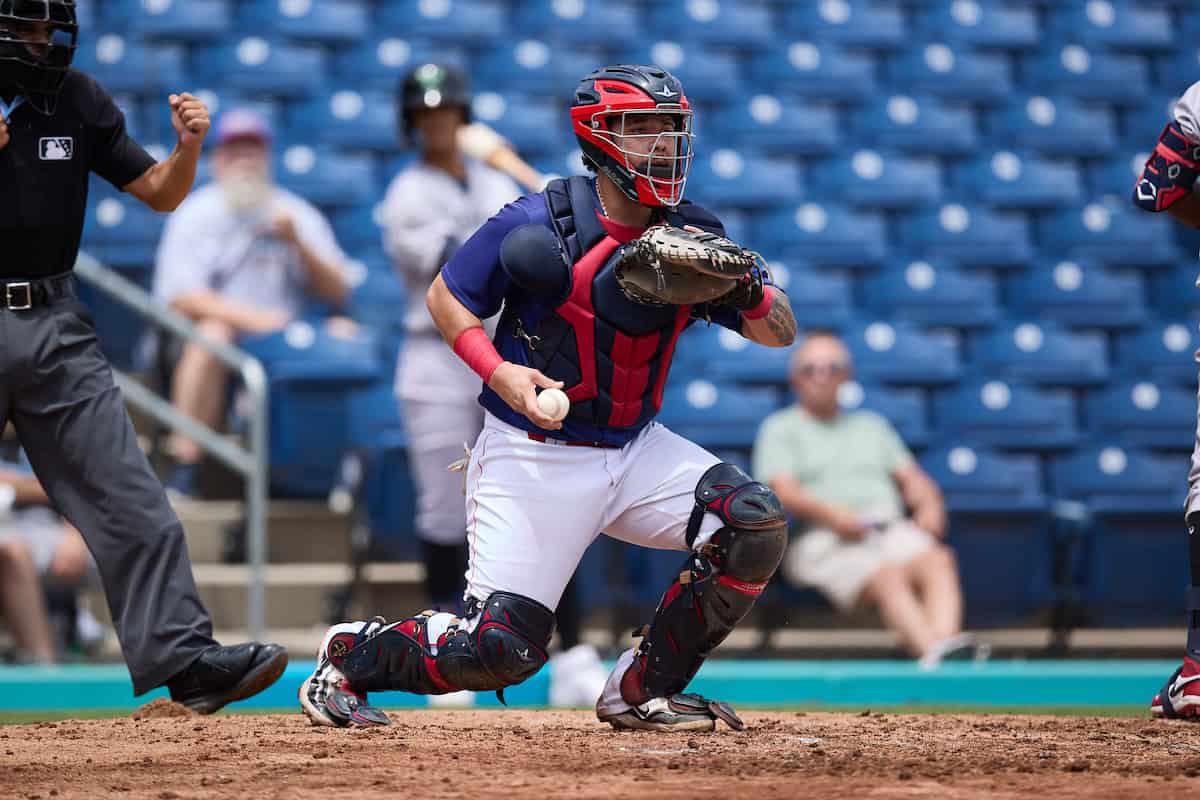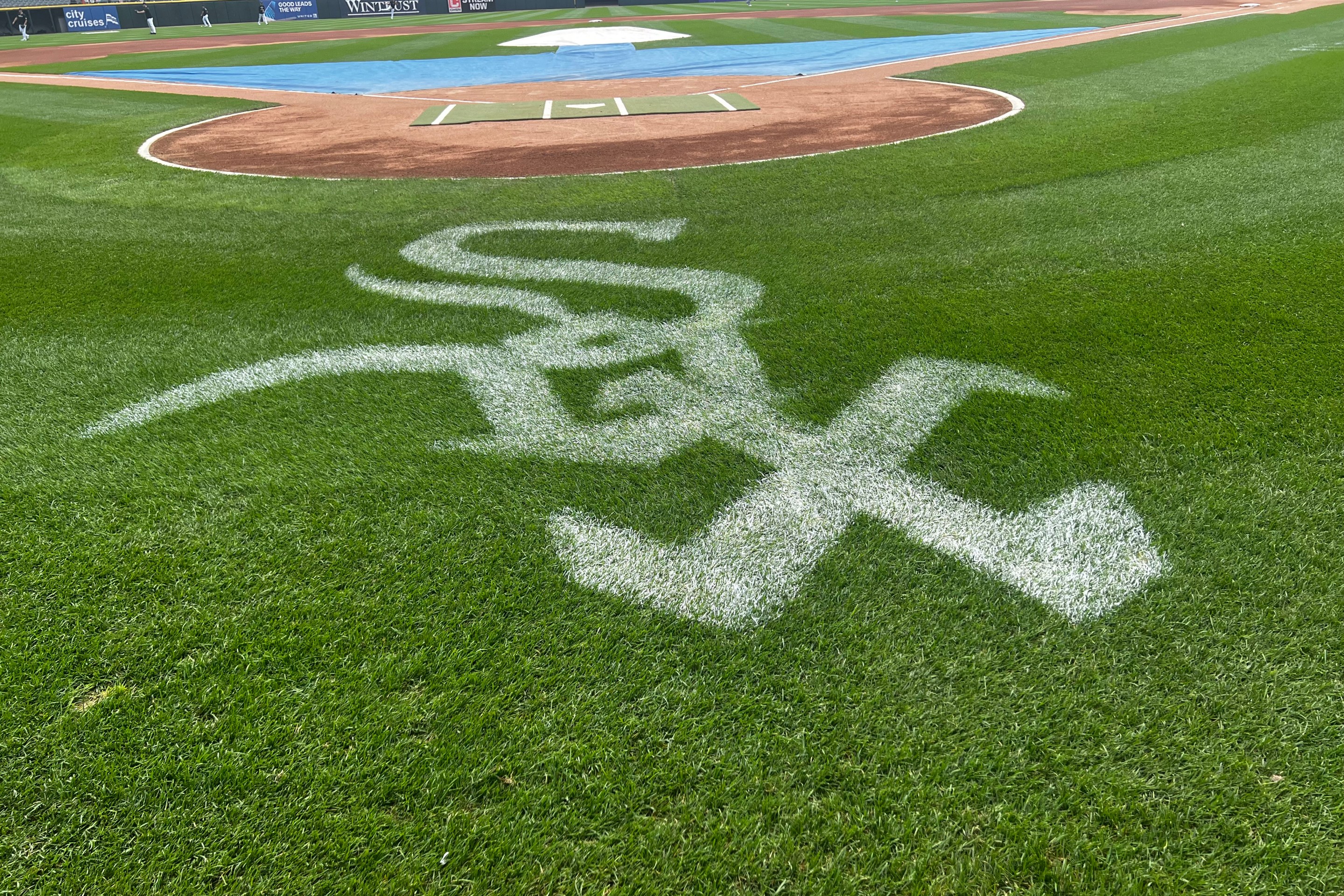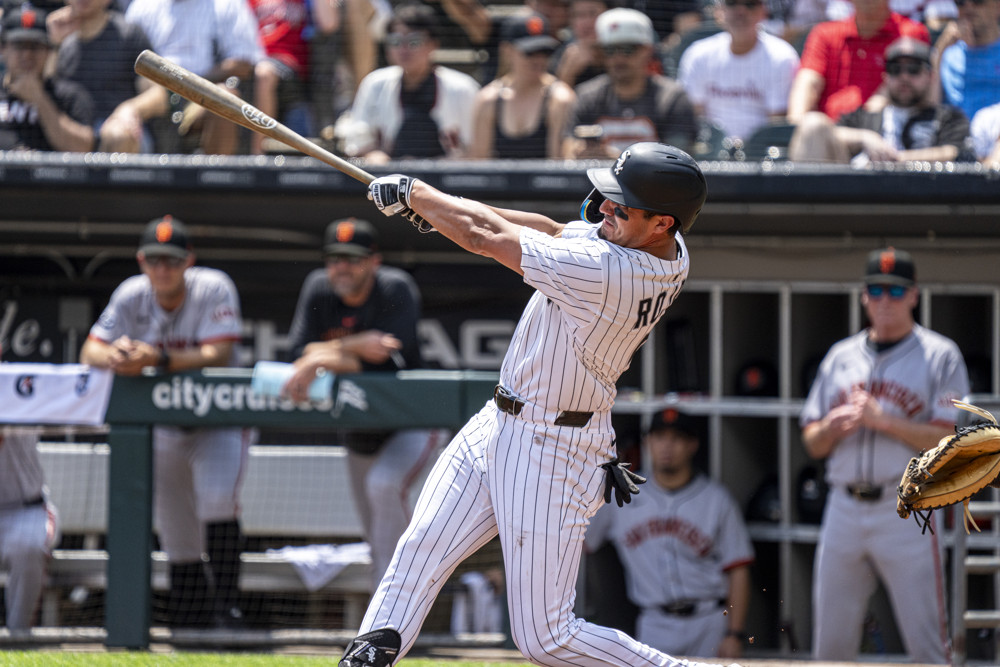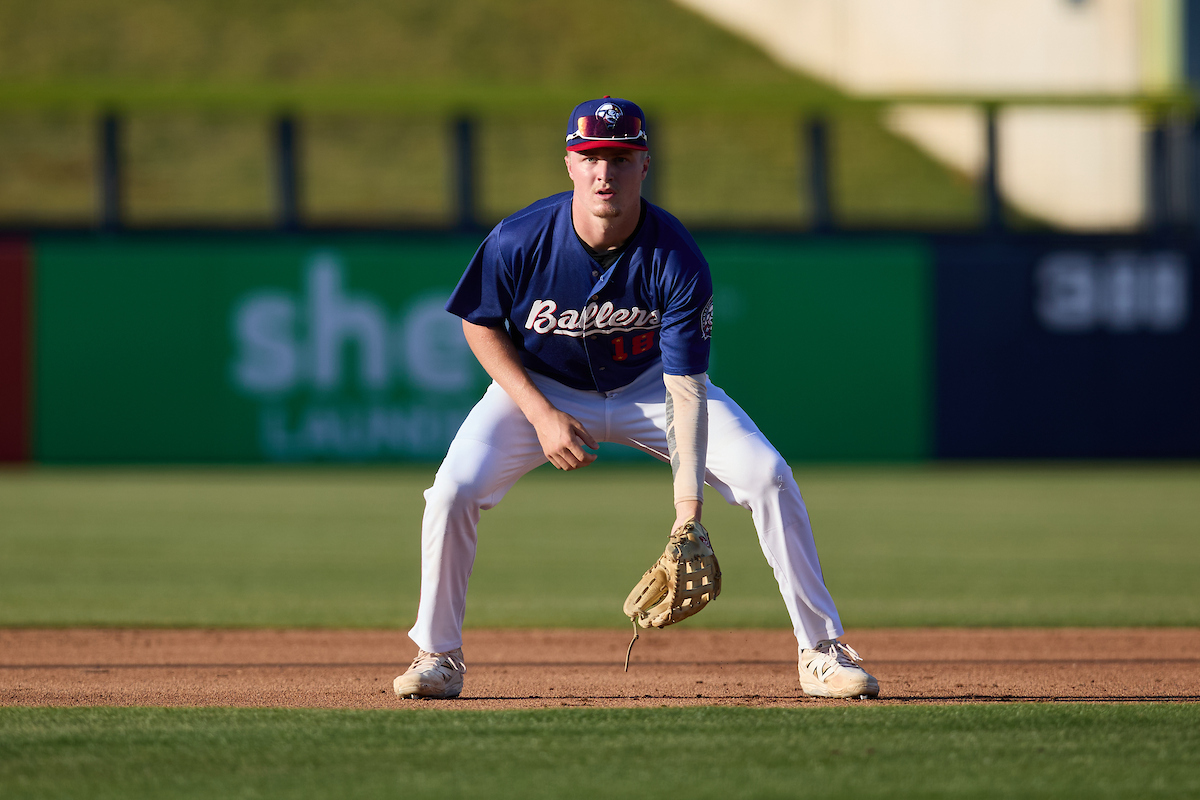Judge them by their winning percentage, and the Kannapolis Cannon Ballers were the most successful White Sox minor league affiliate in 2024. Judge them by total wins or the length of their postseason run, and in either case, they finished just behind the Birmingham Barons. The Barons won the Southern League, while Kannapolis lost the Carolina League Championship Series in three games to the Fredericksburg Nats.
The Cannon Ballers went 70-61 in the regular season, including a particularly gaudy first half during which they ran away with the South Division with a 41-25 record and a staggering +138 run differential. They even managed to lead the Carolina League in runs during a sleepier second half, when they weren't as easily able to replace promoted pitchers.
When you look at the performances from their position players and pitchers, there's one obvious reason for their success.
| Hitters | Age | R/G | BB% | K% | AVG/OBP/SLG |
|---|---|---|---|---|---|
| Kannapolis | 21.4 | 5.28 | 11.6 | 25.0 | .253/.350/.368 |
| League | 20.5 | 4.41 | 11.0 | 25.2 | .229/.325/.336 |
The Cannon Ballers ran out the oldest crop of position players in the league, but unlike other White Sox minor league affiliates in other seasons, at least they had something to show for it, like an easy first-half title and average-or-better results across the board.
Some of it was by choice -- Rikuu Nishida didn't need to spend 90 games with the Ballers -- but he and other collegiate-raised contributors might've been promoted earlier had more vacancies naturally opened in Winston-Salem. Because the Dash lineup was as healthy as it was unimpressive, spots had to be forced open. Though the timing was delayed, the Ballers were eventually able to raise the degree of difficulty over the course of the season, with promotions and trades bringing in teenage starters midsummer.
| Pitchers | Age | RA/9 | BB% | K% |
|---|---|---|---|---|
| Kannapolis | 22.4 | 4.16 | 10.6 | 25.6 |
| League | 21.6 | 4.41 | 11.0 | 25.2 |
The same can be said on the pitching front, although most of the important individual workloads were amassed by starting pitchers in age-appropriate seasons -- 21 or 22, opening their first full professional seasons in Low-A before finishing the season in Winston-Salem. The bullpen skewed older.
Position players
George Wolkow: It's neither incorrect to say that Wolkow's performance was highly impressive for an 18-year-old who doesn't turn 19 until January, nor that he might have a hard time doing meaningfully better. After 15 overpowering games in the Arizona Complex League, the Downers Grove native spent the rest of the season in Kannapolis, hitting .241/.342/.428 over 76 games, finishing the season with 11 homers, four triples and 11 doubles. While his success was predicated on a .407 BABIP, he didn't luck into it. "Rockets against A-ball defenses" is generally a winning strategy.
The strikeout rate is the chief concern. He had 132 of them over 325 plate appearances in Low-A, and he didn't make progress on it over the course of the season, as his K-rate was 40.6 percent in both halves of his season with the Cannon Ballers. It'd be crazy to expect a 6-foot-7-inch teenager to have his levers synced up against professional pitching on a consistent basis, but it'd also be ill-advised to underestimate the challenge of controlling such an immense strike zone. The project remains a sizeable one, requiring considerable patience for everybody involved, Wolkow included.
Ronny Hernandez: The White Sox issued Hernandez one of the most challenging assignments of the season by having him start the season in Kannapolis, but the 19-year-old Venezuelan handled duties on both sides of the ball as well as could possibly be expected. He hit .273/.387/.328 with more walks (62) than strikeouts (59) over 413 plate appearances, and caught 54 games with just one error and three passed balls.
The catch for this catcher is power, or a lack thereof. After collecting 16 extra-base hits over 172 plate appearances in the ACL last season, Hernandez totaled just 17 over 413 plate plate appearances in 2023, while throwing out just 15 runners in 109 chances. Kannapolis manager Patrick Leyland said Hernandez was making all the necessary progress at this stage in his career. Plenty of work remains, but he's already made himself more interesting than the typical $30,000 signing
Jeral Perez: With Miguel Vargas looking frequently overmatched with the White Sox and Alexander Albertus out for the year, Perez turned in the most encouraging performance by a player acquired in the three-way deadline trade. He hit .259/.344/.431 over 30 games with Kannapolis. Combine it with the 75 games he accrued with Low-A Rancho Cucamonga in the Dodgers organization, and he hit .262/.370/.423 with 12 homers, two triples, 25 doubles, 62 walks and 110 strikeouts over 481 plate appearances.
He doesn't turn 20 until next month, he has a coherent plate approach, and the White Sox had him playing shortstop more frequently than he did with the Quakes, and to no ill effect. The question is whether he'll be able to excel at higher levels without any real element of standout physicality, but for 2024, he handled the task asked of him as well as could be expected.
Ryan Burrowes: Burrowes is the inverse image of Perez. He's bigger, he's faster, but he spent most of the season scuffling with Kannapolis. He hit just 204/.292/.246 over 322 plate appearances. The K/BB ratio (107 to 32) isn't nearly as worrisome as the K/XBH ratio (107 to 9), not counting a clutch homer in the playoffs. Burrowes spent the season trying to implement mechanical changes after a less-than-impressive stateside debut in the ACL in 2023, but aside from the occasional hot streak that was negated by a corresponding cold spell, any rewards for the work will have to wait until next year.
Sam Antonacci: The fifth-round pick out of Coastal Carolina was a welcome addition to the Cannon Ballers roster during the final month-plus, hitting .324/.461/.412 with 22 walks to 16 strikeouts over 128 plate appearances -- and that performance included a slow start. The polished look carried over to the field, where he played errorless ball between second and third base over 19 games. Winston-Salem should pose more of a test.
Lyle Miller-Green: The 17th-round pick had me as "Siberian-born two-way player" regardless of his production, but the .219/.351/.375 line more or less fulfilled the draft-day pluses and minuses. He flashed some of the power that produced 30 homers over 56 games at Austin Peay, but also struck out 26 times over 77 plate appearances as he struggled to find his timing with wooden bats. It remains to be seen how seriously the White Sox will treat his pitching potential, which is the element that gives him an extra layer of intrigue over other college outfielders who played in Kannapolis like T.J. McCants or Nathan Archer.
Pitchers
Grant Taylor: Ideally, Taylor's write-up would've been found in Winston-Salem's affiliate review, but a lat strain limited him to just 16 overwhelming innings with Kannapolis (25 strikeouts, one walk) after a one-outing tune-up in the ACL. He returned to the desert for the Arizona Fall League to make up some missed time.
Tanner McDougal: Ideally, McDougal's write-up would've been found in Winston-Salem's affiliate review, but after opening the season with the Dash and treading water for the first couple of months, the White Sox sent McDougal down to Kannapolis, where he was able to get back to completing four innings every time. He finished with a 6.04 ERA between the two levels, and while he struck out 116 batters over 92⅓ innings, the K-rate was diminished by a bunch of batters reaching (89 hits, 58 walks, 10 HBPs).
He and Peyton Pallette spent the 2023 season on the White Sox's post-TJS workload program, and both spent 2024 season struggling to make progress in Winston-Salem's rotation. That Pallette was shifted to the bullpen -- where he quickly thrived -- probably speaks to him being two years older, and his fastball playing up in shorter bursts. McDougal's fastball has plenty of velocity, but doesn't possess the same life at the top of the zone, which means he'll have to improve the command of his breaking balls to reduce reliance on it.
Jake Peppers: The ninth-round pick out of Jacksonville State University was the only starter to spend the entire 2024 season in Kannapolis' rotation, but it was time well spent. He had problems throwing strikes over the first three months, but he resolved them ... with extreme prejudice.
- First 14 games: 63 IP, 4.57 ERA, 13.4% BB, 19.8% K
- Last 10 games: 40 IP, 3.15 ERA, 3.8% BB, 22.1% K
Crowding in the Winston-Salem rotation and the ability to make meaningful appearances in the Carolina League postseason kept Peppers in Low-A, but he should get the chance to level up.
Aaron Combs: Fresh off pitching high-leverage innings for the NCAA champion Tennessee Volunteers, Combs spent the rest of the summer in Kannapolis after the White Sox drafted him in the eighth round, where he acquainted himself nicely. Include his three games in the Carolina League playoffs, and Combs allowed just two unearned runs on six hits and five walks over 12⅓ innings while striking out 25.
Pierce George: Wildness limited George to just 11⅓ innings at the University of Alabama, but the White Sox took him in the 13th round with hopes of correcting an arm that can hit triple digits. The early returns could've been worse. While he walked four and plunked three over eight innings, two ugly innings early on accounted for most of his missing the target.





